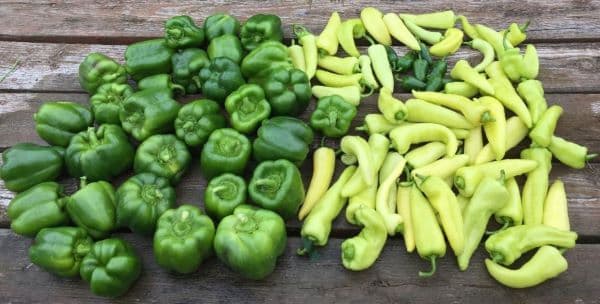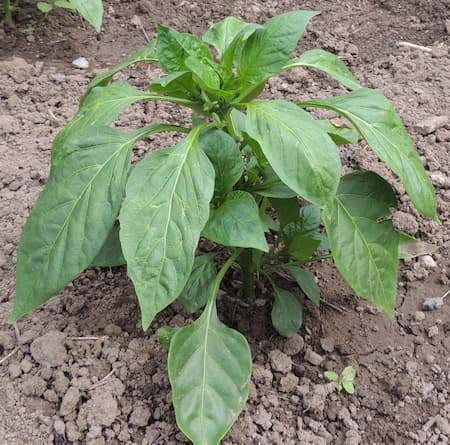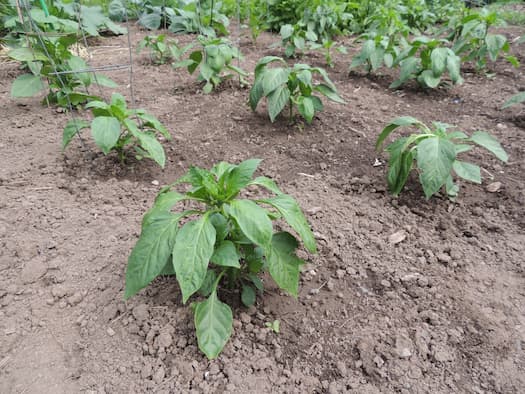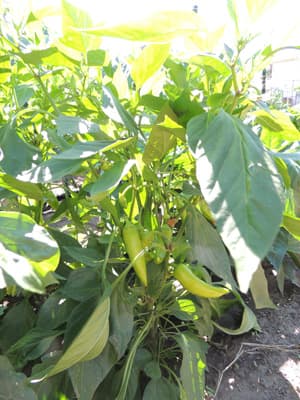How to Grow Peppers

Learn How to Grow Hot and Sweet Peppers in Your Garden
Peppers are one of the most popular vegetables in the home garden. And, growing them is easy. Sweet varieties, and many hot varieties, are native to Central and North America. Many hot varieties are native to Asia, most notably Thailand and China. Most gardeners grow at least two or three varieties in their vegetable garden. Whether you’re a new or experienced gardener, this guide on “How to Grow Peppers” will help you to grow a great crop. Then, after reading this article, go purchase the hot and sweet pepper seeds you need.
In years past, there was no big decision about what variety to grow. Gardeners simply planted sweet green bell pepper plants in their gardens. Several weeks later, they would harvest some great-tasting fruit.
Today’s gardeners have the opportunity to select between a tremendous array of varieties. You can pick hot or sweet peppers. When it comes to hot, there are varying degrees of heat. The debates rage, as to which variety is the hottest.
Also, you can select a color. There are a wide variety of colors to choose from, versus the “plain old green” ones, which were the only choices your parents and grandparents had to choose from. You can choose yellow, red, and orange colors. There is even a variety with a striking purple color, too.
After you are done selecting hot versus sweet, and color, don’t forget shape. There are traditional “bell sweet pepper” shapes including long, slender, and round.
Whatever your preference, seed catalogs, and garden stores cater to the high demand. As a result, they offer many varieties.
Garden Humor: A soldier who survives mustard gas and pepper spray, is a seasoned veteran.

Varieties of Peppers
Types of Peppers – An extensive list of peppers, hot and sweet, along with a description of them.
Learn more about Hot Varieties
Did you know? Paprika is a pepper!
How to Grow Pepper Seeds
Pepper seeds require 14-21 days to germinate. Seedlings grow slowly, at first. Start plants indoors, eight to ten weeks or more before the last frost date for your area. The seeds can be difficult seed germinate. We recommend using a seed germination mat, to shorten the germination time and increase the germination rate.
Many growers simply visit their local garden store for young plants to transplant. Avid garden hobbyists find pleasure in a new challenge and start their own pepper plants indoors.
Tip: Provide bottom heat or heat lamps to raise the soil temperature to 80 degrees. This will promote better and quicker germination.
Did you Know? A sweet green pepper is not yet ripe. Let it grow, and it will turn red. The texture will change markedly, and the flavor will change as well.

How to Grow Peppers
Select a location in your garden that receives full sun. Prepare the garden, adding plenty of compost, manure, and a general fertilizer.
All varieties grow best in warm to hot weather. Do not transplant seedlings outdoors until all danger of frost has passed, and the soil begins to warm. If the weather is still cool in your area, delay transplanting a few days, if possible. Tender, young seedlings do well in hot kaps and cold frames.
Space 18-24 inches apart, in rows 24 to 36 inches apart. This spacing varies a little for each variety.
The plants grow best in moist soil. However, avoid wet soil. Water regularly in the hot, dry summer months.
Add mulch around the plants to keep down weeds, and to retain moisture. Then, as the plant flowers and fruit begins to develop, switch over to a fertilizer higher in Phosphorous and Potassium. Gardeners often make the mistake of providing too much nitrogen. The result is a great-looking bushy, green plant, and few fruits.
Tip: Peppers are self-pollinators. Occasionally, they cross-pollinate from pollen carried by bees or other insects. To minimize this possibility, don’t plant hot and sweet varieties too close together. This year’s cross will not affect the fruit of this year’s crop. However, the cross will show up in the genetics of the seeds if you save them.
Ideal Soil pH: 5.5 – 7.0.
Also, see:
Ideal Soil pH for all vegetables.
A Word About Hot Peppers
The ingredient in peppers that puts the heat into hot peppers is Capsaicin. Sweet green peppers are devoid of this chemical. So, the hotter the pepper, the more the level of Capsaicin.
Capsaicin is measured in parts per million (ppm). More on Capsaicin.

Insects and Pests
Insects can be a problem, affecting both plants and fruit. Spider mites and aphids are the most common, with an occasional insect borer. In many areas, it is infrequent.
Try using an organic insecticide or dust. More on Organic Insect Repellents.
Plant Disease
Viruses and diseases are infrequent.
Fungal infections can be treated with fungicides. Apply treatment as soon as you see it.
How to Grow Peppers - Harvest Time
Days to Maturity: 70 to 90 days or more, depending upon the variety. The seed packet will display the days to maturity for the variety that you have decided to grow.
Peppers can be picked as soon as they reach an edible size. Most of us just can’t wait for that very first fruit to fully mature.
Plant Hardiness
Frost will stunt or kill the plants. Cold weather can cause the plant to slow down or stunt it as well. In the spring, use hot kaps to protect tender, young seedlings. In the Fall, cover the plants, if frost is expected.
Garden Tip: Use five-gallon buckets for a quick cover-up on cold fall nights. They are a perfect size, and can be quickly placed over the plant.
Pepper Recipes
Related Articles
Also, people who read this article like:
Do you know your Hot Peppers? Check out the varieties of hot peppers.
How to Grow Peppers – From Garden Hobbies
Please support our site. Shop for:
- rmmatthews100@hotmail.com
- 585-721-6528
- Rochester, NY
©1999-2024 GardenersNet.Com, All Rights Reserved

